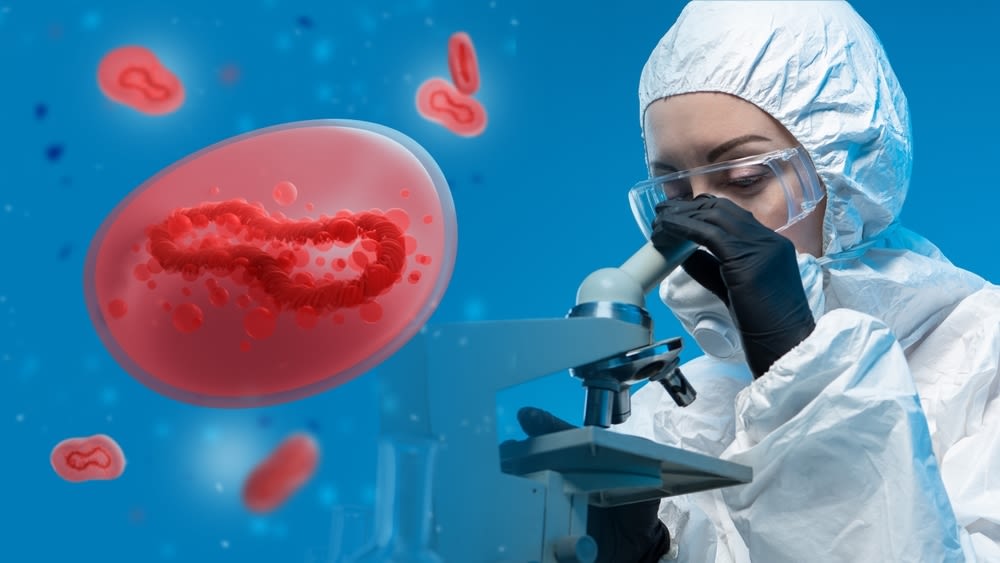Worried About Monkeypox in Oregon?

Just when you might have been allowing yourself a momentary exhale after two plus pandemic years, news breaks of a new disease: turns out we’re now also in the middle of a global resurgence of monkeypox, an exceedingly rare disease that tends to begin with fever, headaches, and swollen lymph nodes, after which patients develop a rash.
This latest outbreak comes as cases are being reported in countries that don’t normally report monkeypox, including several European countries and the United States, where just 31 cases had been reported at time of writing. That’s not many, but some of those cases have been in neighboring Washington and California. We spoke to Mark Slifka, professor of molecular microbiology and immunology in the OHSU School of Medicine and a part of the scientific response during the last monkeypox outbreak in the US in 2003, to find out what we need to know about monkeypox.
How is monkeypox spread?
It's very, very different from COVID. . . It takes very close contacts, you know, like for instance, living in the same household as a monkey pox case. We’re now over 1000 cases in at least 27 countries, and the vast majority of those cases are actually being spread by intimate skin to skin contact. So that that means it is not a risk to the general population.
Does intimate skin to skin contact mean it’s sexually transmitted?
Yeah, and the majority of the cases are actually young men who have sex with men and have multiple partners. . . It's unclear if monkey pox is actually a sexually transmitted disease or if it's more the skin-to-skin contact that happens during sex, and so that's what needs to be determined. But that is the group that that is at highest risk.
What precautions can people take to reduce their risk of a monkeypox infection?
Limit the number of partners and be aware of cases within your network. There are some unrecognized chains of transmission. That's why the WHO and the CDC are concerned, because it's not just one string of contacts. The good news about that is that the cases aren't so severe that people have been reporting them. The bad news is the cases aren't severe enough for people to be reporting them. And so some of these cases are going undetected. So again, the main thing is to limit your potential exposure with people that you don't know, and then if you do have symptoms, especially a strange rash that is unusual, contact your health care provider.
What can a health care provider do?
There are several things that can be done. If you had a potential exposure, or if you're living with someone who's been diagnosed, one is that you can get a post exposure vaccination. It can take up to 21 days [from infection] for symptom onset. And that is why post exposure vaccination works for just a handful of viruses like for smallpox, monkey pox, or even rabies.
And if you do have symptoms of an infection?
There is an antiviral drug available called tecovirimat, or T pox, and, and that works very well. It's very safe, very effective. So in other words, there's a limited number of vaccine doses available for contact. And there are limited doses available of an antiviral drug that was specifically designed for this type of pox virus. It works for monkey pox and for smallpox.
Can monkeypox be serious or even fatal?
It can be. Right now, out of these 1,000 cases or so that have been identified in these non-endemic countries, these are the cases that we’re most intrigued by because it's spreading by a different route of transmission that what we've seen in the past, and those are all among young adults. And there hasn't been a single death out of those 1,000 cases. So that's very, very good news. In endemic countries, there's been 66 deaths from January until June 1. And the majority of the severe disease and deaths occur among children and people who are immune compromised. Those are two other risk factors that are important, and so this still is a deadly virus. But the good news, if there is good news, is that these transmission events that are getting the most publicity are among an age group that are less likely to have a severe disease, as long as they're not immunocompromised.
Should we be concerned?
For the general population, the risk is extremely low.




